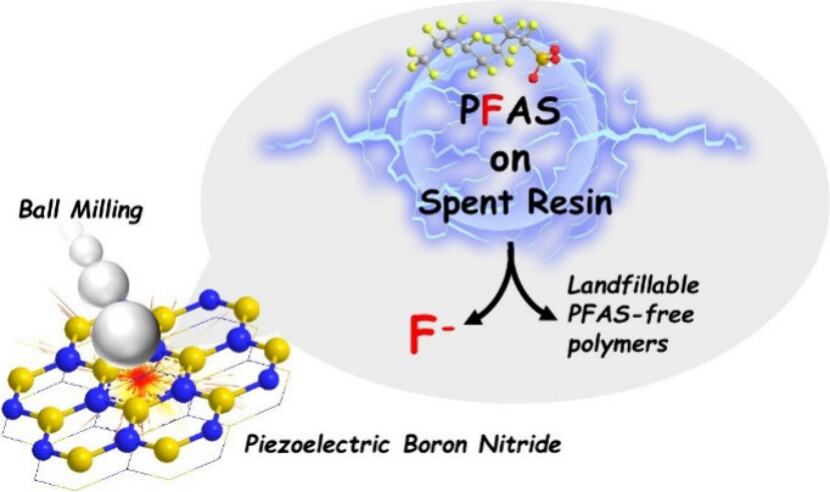Clarkson University Researchers Develop Innovative Technology to Destroy PFAS
A research team at Clarkson University has developed a groundbreaking method to effectively destroy per- and polyfluoroalkyl substances (PFAS) on spent sorbents, addressing a critical environmental challenge.

The study introduces a process to break down PFAS captured by spent anion exchange resins (AERs) without incineration or chemical solvents.
AERs are frequently used to remove PFAS from drinking water and wastewater, but disposing of these PFAS-filled AERs has remained a challenge. Traditional disposal methods, like incineration or landfilling, pose the risk of causing secondary PFAS pollution, emitting toxic byproducts, and re-releasing PFAS into the environment.
The method developed at Clarkson successfully reduced PFAS levels below detection limits in both laboratory-prepared and field-collected resins, offering a scalable and environmentally friendly solution that can be operated at ambient conditions.
PFAS, commonly known as "forever chemicals," are widely used in industrial and consumer products but pose severe environmental and health risks due to their persistence.
The research, led by Associate Professor Yang Yang and his team at Clarkson's Department of Civil and Environmental Engineering, demonstrates that piezoelectric ball milling with boron nitride (BN) powders can achieve near-complete destruction of PFAS on AERs, converting them into harmless fluoride ions.
"This technology provides a viable pathway for eliminating PFAS from spent resins without generating secondary pollution," said Yang. "Our findings pave the way for a cost-effective and sustainable alternative to existing methods for the disposal of hazardous solid waste and spent sorbents. The scale-up demonstration of the ball milling technology is underway.”
Graduate student Jinyuan Zhu is the first author of the study, recently published in Environmental Science & Technology Letters. The research also benefited greatly from the collaboration and expertise of Clarkson faculty members, including Professors Thomas Holsen, Sujan Fernando, and Alan Rossner. This research is supported by the National Science Foundation (NSF).
To read the full article, click here.
